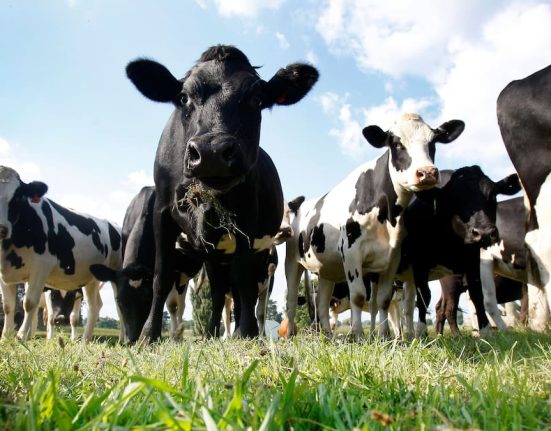
How to control your finances on a tight budget
Living on a tight financial budget?
That doesn’t mean you can’t take control of your finances.
- Beginning on 2025 tax returns, new car buyers might qualify for an above-the-line deduction of up to $10,000 in car loan interest in a year.
- Taxpayers will not be able to deduct interest on loans taken out to buy a used car or truck.
- The new car loan deduction only applies in 2025, 2026, 2027, and 2028.
The new tax break on car loan interest comes equipped with a trunk full of caveats.
How much you might, or might not, benefit depends on how much money you borrow, your interest rate on the loan, and how much money you’re making now and in the next few years.
Oh, and you need to buy a new car with its final assembly in the United States.
No, the tax break will not apply on car loans taken out to buy a used car — and that’s troubling for many consumers since interest rates on used car loans tend to be much higher than rates on new car loans.
Drivers who prefer to lease won’t qualify, either.
Roughly 3.2 million new car loans — or a quarter of retail new vehicle transactions — potentially could qualify for the new tax break based on an analysis of cars sold and income limits for the new deduction on car loan interest, according an estimate from Jonathan Smoke, chief economist for Cox Automotive.
How much can you save with the new car deduction?
President Donald Trump rolled out the idea for a new tax break on car loans during a 2024 campaign stop at the Detroit Economic Club. The details of the deal unfolded this summer in tax bills introduced in Congress. The tax break is part of the big bill signed into law by Trump on July 4.
One key point: Higher income households will not see much or any of this tax break, even if they buy a U.S. assembled car.
Higher income households tend to buy more new cars, but their incomes could be above the income limit required to qualify for the deduction for interest paid on new car loans, Smoke said. And lately, many well-off consumers who might qualify for the tax break have trended more toward paying cash, Smoke said.
With interest rates near 25-year highs, Smoke said, many new-vehicle buyers don’t want to pay 10% or so on an auto loan, when they’re not getting anything remotely near that for cash in a savings account.
The intricate nature of taxes and car loans makes it impossible to give a best-guess estimate for how much an individual might save. It’s not as simple as seeing $500 off for military or first responders.
The savings from the new deduction on car loans, which was part of Trump’s “big, beautiful bill,” will vary significantly.
A general ballpark estimate suggests that tax savings could range from around $300 to $900 per year for many new car buyers, according to Patrick Anderson, CEO of the Anderson Economic Group consulting firm in East Lansing.
Car buyers will need to run their own numbers, he stressed, to see if this is a deal that makes sense for them. Or not.
“If it doesn’t make sense for you to buy a new car, the tax deduction won’t make it make sense,” Anderson warned.
How does the new deduction on car loan interest work?
Beginning on 2025 tax returns, new car buyers can take an above-the-line deduction of up to $10,000 in car loan interest during a given tax year. The deduction would reduce your taxable income in a given year, if you qualified.
If you took out a car loan in January or February, this tax break could still work for you. The interest must be paid on a new car loan that originated Jan. 1 or later.
You do not need to itemize their deductions to qualify. You can still claim the standard deduction, as roughly 90% of individual filers do.
Lenders must file information returns with the Internal Revenue Service and provide statements to taxpayers showing the total amount of interest paid during the tax year.
The car loan deduction only applies in 2025, 2026, 2027, and 2028. Take out a six-year or seven-year car loan this year and you’re not receiving any tax break in the final year or two of that loan.
The White House bills the change as: “A tax deduction on Made in America auto loan interest.”
Make no mistake, most people don’t pay anything close to $10,000 in interest on a car loan in a year. Or even two car loans. So, it’s best not to expect a $10,000 deduction on car loan interest if you buy a new car soon.
To reach the $10,000 interest limit, Smoke said, it generally would take a new loan of more than $110,000. Just how many new car buyers could qualify is even further limited by the rule that the new car or truck must have its final assembly in the United States and the buyer must have an income below a set threshold.
One example of a potential vehicle, he said, would be a Cadillac Escalade, which has some models priced at $120,000 and up.
For example, you could deduct the full $10,000 in interest in a year if you took out a $115,000 new car loan at 11% for 84 months, according to the Bankrate.com auto loan calculator. The monthly payment on that loan would be $1,712.
Smoke estimated that less than 1% of auto loans are of the size that would produce a $10,000 deduction on car loan interest in a year.
Tom O’Saben, enrolled agent and director of tax content and government relations for the National Association of Tax Professionals, notes that you can deduct interest from two new car loans in the same tax year, as long as both vehicles and loans meet all eligibility rules.
But again, how many households are taking on two new car loans or more at the same time or even around the same time?
What are the income limits for the new car deduction?
The deduction phases out by $200 for every $1,000 of modified adjusted gross income above $100,000 for single filers and $200,000 for joint filers.
A single person with $149,001 in income or more would not receive any deduction, said Mark Luscombe, principal analyst for Wolters Kluwer Tax & Accounting in Riverwoods, Illinois.
The deduction phases out entirely, he said, for a married couple with $249,001 or more in modified adjusted gross income.
Other key rules:
- The vehicle must be new and have its final assembly in the United States. You can ask the dealer, look at the 17-digit vehicle identification number on the car or truck, look at the sticker on the window. The National Highway Traffic Safety Administration website has a free VIN lookup tool to decode where a vehicle was assembled. “The assembly information is also on the Moroney Sticker that is required by law to be in the window,” said Mark Schirmer, a spokesperson for Cox Automotive.
- Eligible vehicles include cars, SUVs, pickup trucks, vans, minivans and motorcycles. It must be under 14,000 pounds in weight.
- Someone who is buying a truck to use for their business would not be able to claim the deduction. “It is not available for a vehicle used exclusively for a business, such as a Schedule C business,” said Luscombe, of Wolters Kluwer Tax & Accounting.
- The vehicle must be manufactured primarily for use on public streets, roads and highways.
- The loan cannot be from “The Bank of Mom” or “Dad’s Dollars” app. Loans must be made by unrelated parties.
- Taxpayers will need to supply the vehicle identification number for the car that they bought using the auto loan when they file their tax return claiming the deduction.
Many middle income consumers are likely to benefit — and possibly consider replacing an older car or truck this year or next, according to Anderson, the East Lansing economist.
“This is a very important tax policy change for working-class families — and for the auto industry,” Anderson said.
Offering a deduction on car loan interest paid by consumers, Anderson said, is much more focused on everyday, middle-income car buyers than the soon-to-expire tax credits for electric vehicles, which initially benefited mainly wealthy car buyers. The Inflation Reduction Act of 2022 later broadened the tax break and appealed to more consumers. The clean vehicle credit expires Sept. 30 under the mega tax bill.
Younger adults who are buying their first new car, Anderson said, are among potential buyers who are the most likely to benefit from the new tax deduction on car loan interest. Someone who received a graduate degree in 2025, got a job and expects to be making significantly more money in the next few years could see higher tax savings as their income climbs into a higher marginal tax bracket.
Working families that need a family-hauler and drivers eyeing lower-trim trucks for personal use also would benefit, he said.
What cars and trucks qualify for tax break on interest?
What many might not realize is that popular brands, such as Toyota and Honda, have assembly plants in the United States. The Subaru Outback is made in Indiana.
Buyers who want the deduction can consider the Toyota Camry, the Ford-150, the Ram 1500, the Toyota Tundra and the Ford Explorer, said Ivan Drury, director of insights at Edmunds.
But some popular brands that won’t qualify, Drury said, include the Toyota Tacoma, the Honda HR-V, the Chevrolet Equinox, the Kia K4 and the Ford Maverick.
Some vehicles are built in the United States and other countries, he noted, making it essential for buyers to take a hard look at the information for the car or truck their buying. These “gray” vehicles include the Chevy Silverado 1500, the Honda CR-V, the Hyundai Tuscon, the Nissan Rogue, and the Subaru Crosstrek.
Drury noted that the Toyota Corolla comes in a variety of styles, and it is assembled in two plants in the United States and three factories in Japan.
Nearly half of all vehicles sold in the United States are assembled here, Drury said, so consumers have a good selection of vehicles to buy to qualify for the tax credit on car loan interest.
Anderson pointed out cars and trucks that could qualify also include the Acura Integra, made in Ohio; the Toyota Camry and Highlander models, made in Kentucky and Indiana; the GMC Acadia, Chevrolet Traverse and Buick Enclave, which are made in Michigan; the Jeep Wrangler and Cherokees, made in Ohio and Michigan; the Ford Bronco and Escape, made in Michigan and Kentucky. (The Bronco Sport is made in Mexico.)
Anderson expects that the IRS will ultimately compile a list of qualified vehicles based on U.S. “final assembly” locations.
Smoke, the Cox Automotive economist, took a look at 2024 sales and gave a percentage of each brand’s vehicles that would qualify, weighted by sales volume. For example, his list indicates that 7% of Volvo vehicles sold in the United States would qualify for the new deduction, 20% of Mazda, 32% of Dodge, 48% of Nissan, 50% of Subaru, 52% of Toyota models, 60% of Honda, 78% of Ford, 83% of Jeep, and 100% of Acura, Cadillac, Lucid, Rivian and Tesla.
But how much will car loan borrowers save in taxes?
Even if you qualify, trying to predict your potential tax savings is cumbersome.
One potential mistake that buyers could make, Drury said, is overestimating the value of a tax break if they’re forced to choose between a manufacturer’s offer for a cashback rebate or a discounted, promotional rate on a car loan.
“We still recommend doing a bit of math on the actual take home difference as it will vary quite-a-bit from one consumer to the next,” Drury said.
If you bought a new car or truck in October, you’re only going to qualify for deducting interest for a few months in 2025. If you’re buying next year, it might be wise to buy early in the year so more interest falls within the tax year, O’Saben said.
A key point to understand: Your entire monthly car payment would not be fully deductible. Many people aren’t going to be able to reduce their taxable income by the maximum $10,000 annual cap for the deduction — even though monthly payments are skyrocketing.
Nearly 1 in 5 consumers agreed to pay $1,000 a month to finance a new car in the second quarter of 2025, according to data from Edmunds. The average amount financed for new cars and trucks hit $42,388 in the second quarter, an all-time high.
Calculate how much interest you’d pay in a year by looking at an amortization schedule for car loans online.
For example, you might be able to deduct $333 for the first month’s interest and less than that each month if you took out a $50,000 car loan at a rate of 8% for 60 months and had a car payment of $1,014 a month. In the first 12 months, you’d pay $3,694 in interest in this example.
It would amount to roughly $813 in tax savings for one year for someone at a 22% tax rate. Even if you qualified in future years, the amount that could be deducted in those years would be smaller, leading to smaller tax savings if you remained in the same tax bracket.
Smoke, chief economist for Cox Automotive, said consumers need to understand that you’re not paying the same amount of interest each year on your car loan.
More of your payment goes to cover interest, Smoke said, in the first years of the loan. The largest amount that you’d be able to deduct in interest would be in the first 12 months and then it would get smaller in the future.
Two car buyers could pay the same amount of interest in a year, but the tax savings would be smaller for someone who earns less money and pays a lower tax rate.
Someone in the 12% marginal bracket, for example, might save $300 if that person had $2,500 in interest costs for the new car loan in a tax year.
Unfortunately, the tax break comes at a time of uncertainty for car prices, given Trump’s push for higher tariffs.
The tariffs on imported cars and car parts are likely to drive up prices on some vehicles, even if their final assembly is in the United States, economist Anderson said.
Many auto parts that are imported to the United States would be subject to tariffs — and some of that extra cost is likely to be passed along to consumers.
Many vehicles that would benefit from the deduction on car loan interest, Anderson said, also face potentially higher sticker prices due to added tariff costs.
Given all the complexities here, it’s probably best not to take casual tax advice from a car dealer, TikTok or friends and family.
Too many details for how much money you’d save on car loan interest through a tax deduction are buried in arcane fine print — such as your modified adjusted gross income and the amortization schedule of a car loan.
Remember, Anderson notes, your income could change in the next few years, making it unknown how much of a tax break you’d get in future years. A car dealer cannot guarantee future tax savings or a customer, Anderson said.
Luscombe noted that the new tax legislation has several above-the-line deductions that could reduce modified adjusted gross income (MAGI), such as the “senior bonus” deduction for tax filers age 65 and older, the overtime deduction, and the tips deduction. Such changes could make it more complicated to figure out your MAGI for 2025, but it could mean more people could qualify for the car loan deduction break or fall into a lower tax bracket than expected.
It’s a lot to unpack. But like a long list of new tax breaks found in the “big, beautiful bill,” it will pay to dig into the details of the new deduction on car loan interest before you buy.
Contact personal finance columnist Susan Tompor: stompor@freepress.com. Follow her on X @tompor.







